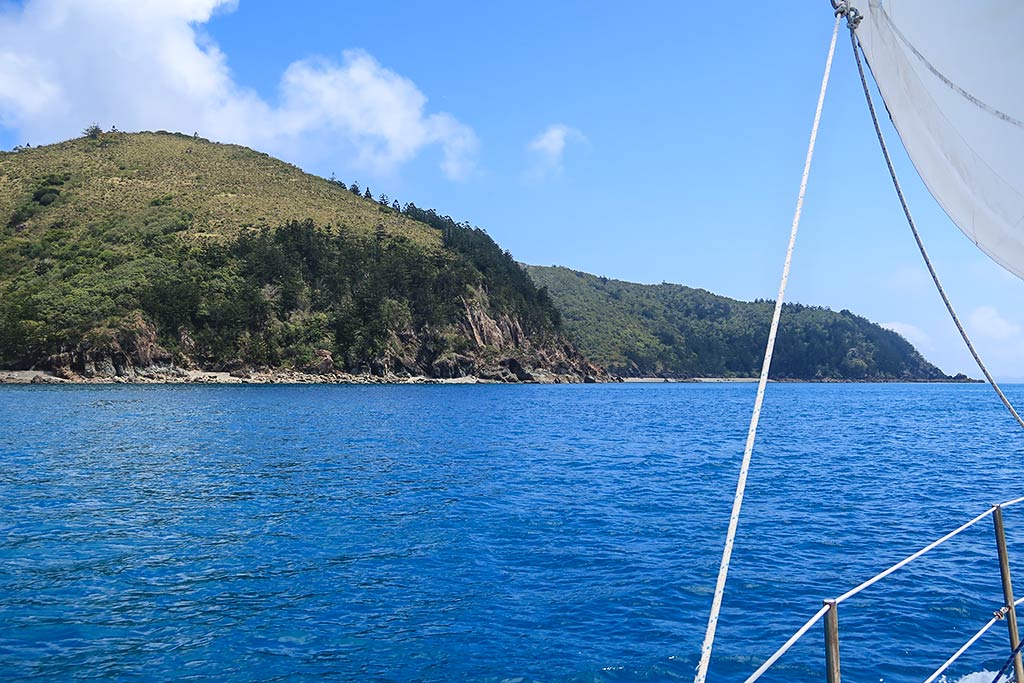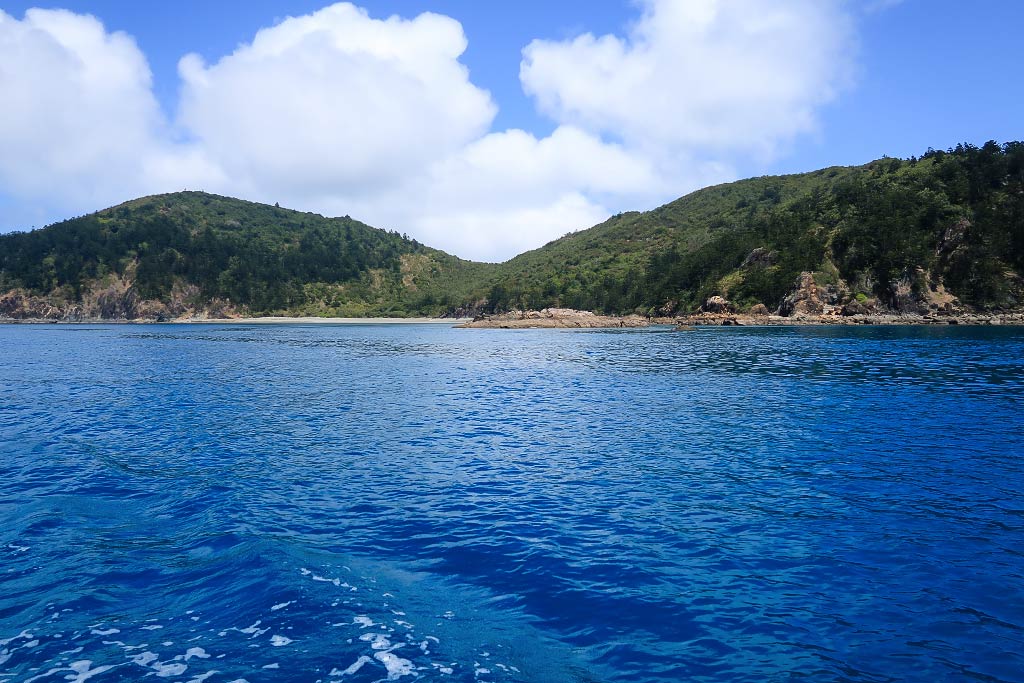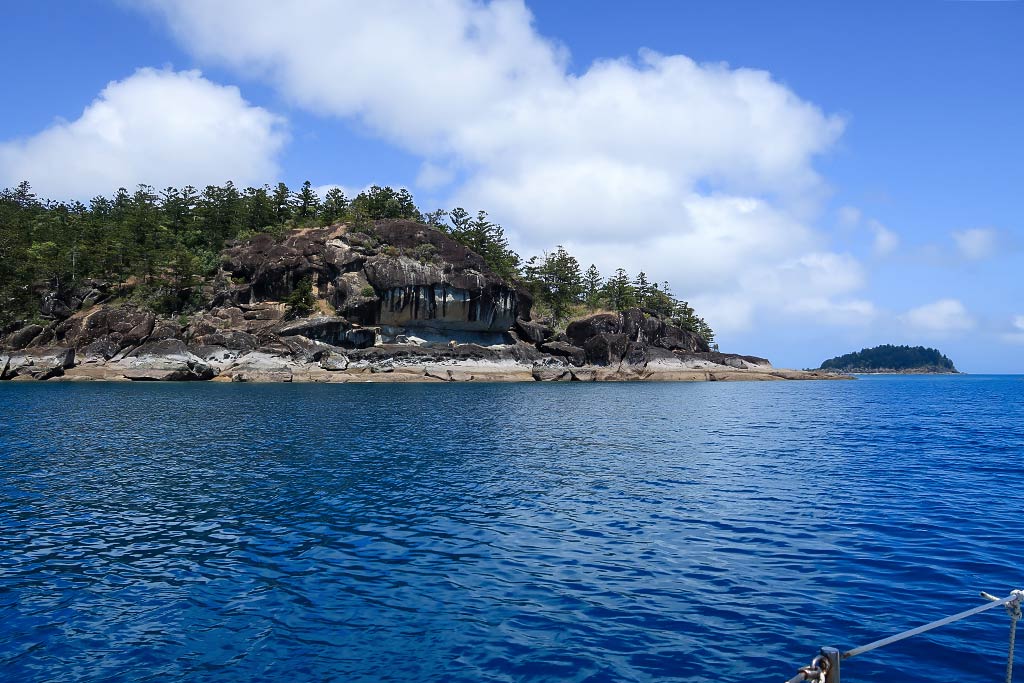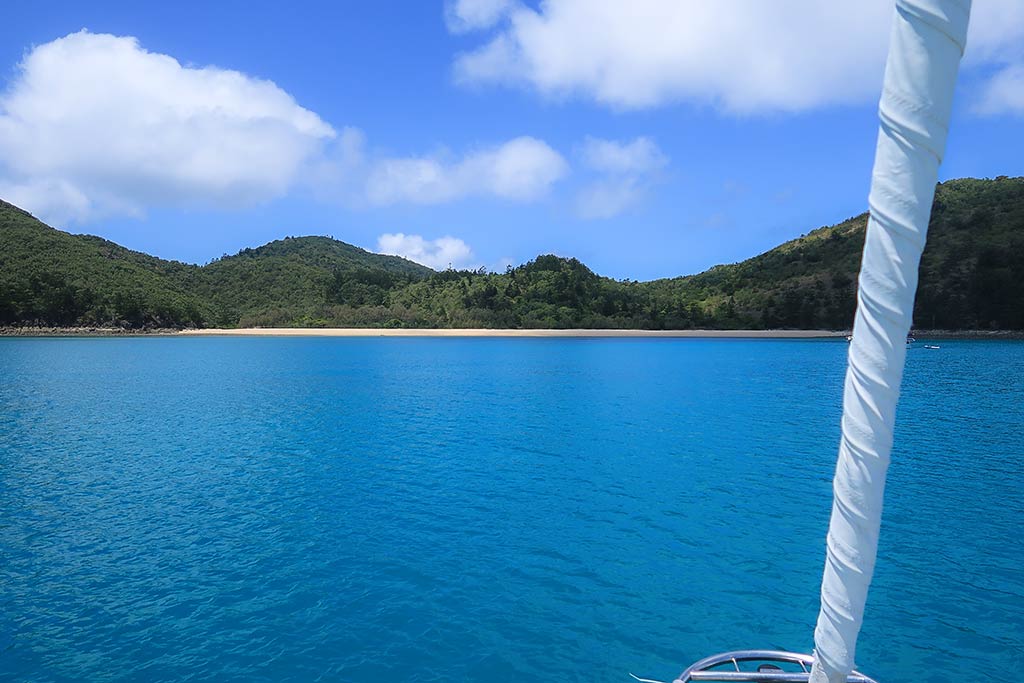Posted December 27, 2023
about September 20, 2022
Another day, another bay: this was turning out to be the theme of our trip through the islands of the Great Barrier Reef.
Ahead of us lay an area of islands known as the Sir James Smith Group, also known as Smith Islands National Park. It was comprised of two smaller island groups: the Anchor Islands and another unnamed group. We were headed to the latter.
Below, a map of the Sir James Smith Group of islands.
Deciding which of the islands to visit didn’t take much effort. Goldsmith Island was sizable and mountainous, offering a choice of several bays while neighboring islands, Linne and Tinsmith, lacked suitable anchorages.
With today’s wind nearly non-existent, we had the freedom to anchor in any of Goldsmith’s bays. Roylen Bay, a large and deep bay on the island’s north side, boasted an excellent beach (according to the guidebook) and seemed well protected from any prevailing swell. While the other bays looked appealing at first glance, they turned out to be strewn with reefs. Roylen Bay was another easy choice.
Our 11-mile trip to Goldsmith Island was business as usual for this area of Australia in September—motoring along a glassy sea while using our cockpit misters to keep things cool. Goldsmith and close neighbor Linne island looked attractively green and hilly as we drew closer.
As we traveled up the channel between the islands, the water transformed into a rich teal hue, beautifully contrasted by the green pines and large black boulders that lined the shore. This scenery seemed more suited to Canada than to tropical islands on the Barrier Reef. As we turned past the north headland, I gasped as the anchorage came into view.
Below, a few photos of the passage between the islands and our first look at the anchorage.
Roylen Bay was stunning, definitely the prettiest we’d encountered during this cruise through Queensland. Forested hills surrounded a pristine white beach lapped by vivid teal water. The bay was calm and well protected by headlands, while a small offshore island offered additional protection from any lurking swell. (The gallery below combines photos from the boat and from the drone).
Naturally, we were eager to explore ashore, but lunch was our first priority. It was the height of avocado season in Australia, and we had loaded up on them in Mackay. Now they were perfectly ripe, and combined with fresh tomatoes, cilantro, onion, garlic, and lime, we had all we needed to whip up a classic California-style guacamole.
As for what to serve with it, tortillas are our first choice. They’re a staple food on our boat, but it can be a challenge to find a similar product in foreign countries. For example, there’s an Indian flat bread known as roti in Fiji. Freshly made, rotis are not the same as a tortillas, but the manufactured and packaged version makes a terrific tortilla substitute. In California, sandwich “wraps” have never been satisfactory for tortilla use. But in New Zealand, Farrah’s brand butter-garlic wrap (and it has to be that particular flavor) is a wonderfully-suitable tortilla.
The tortillas in Australia had been so-so until we discovered a packaged “flat bread” in the Cole’s bakery section. I usually avoid flat bread, but these looked suspiciously like tortillas and turned out to be incredible (although I’m not sure someone looking for actual Middle Eastern flat bread would agree). Alas they were hard to find, but the Cole’s in Mackay happened to have them so we’d stocked up.
With this bounty, we prepared our family-recipe guacamole. It’s customary in Southern California for households to boast their own “special guacamole,” even though they’re admittedly not all that different from each other. Our guacamole, spooned into skillet-heated flour tortillas, is sublime (at least we think so)! This feast was made even better with very cold Mexican beer served with a slice of lime! Ole, by Crocky! –Cyndi



















